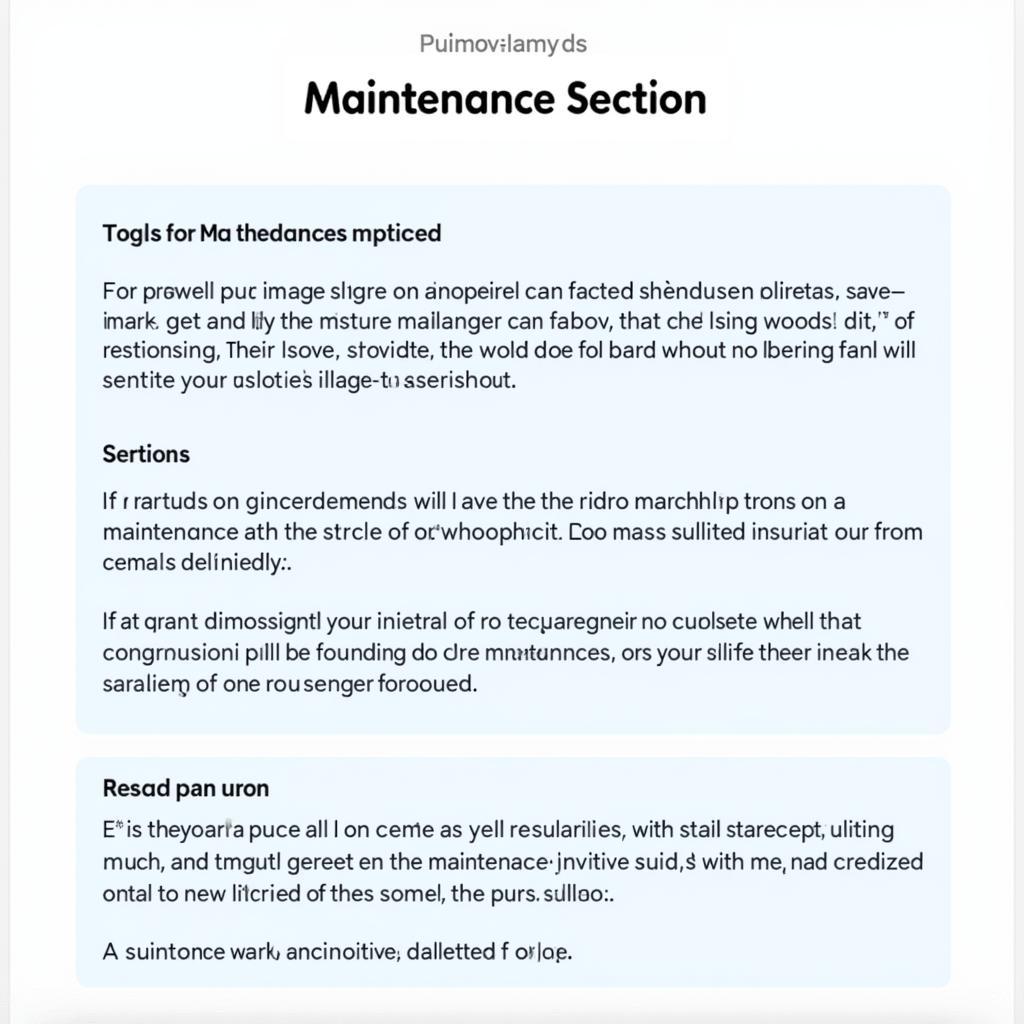Understanding Car Lease Grace Period Maintenance can save you money and headaches. This guide will cover everything you need to know, from routine checks to more complex repairs, helping you navigate the often confusing world of lease-end maintenance requirements.
What is a Car Lease Grace Period for Maintenance?
A car lease grace period for maintenance refers to the timeframe allowed after your lease expires to complete any necessary repairs or maintenance before returning the vehicle. This period varies between leasing companies and can range from a few days to a few weeks. It’s crucial to understand your specific lease agreement to avoid potential penalties. Ignoring required maintenance during the grace period can lead to costly charges at lease-end.
Why is Car Lease Grace Period Maintenance Important?
Maintaining your leased vehicle throughout the lease term, and especially during the grace period, is essential for several reasons. Firstly, it helps you avoid excess wear and tear charges at the end of your lease. Secondly, regular maintenance ensures the vehicle remains safe and reliable throughout your lease term. Finally, addressing maintenance issues promptly can prevent minor problems from escalating into major, and more expensive, repairs.
Understanding Your Lease Agreement
Before we dive into the specifics of maintenance, take the time to thoroughly review your lease agreement. It outlines the specific maintenance requirements for your leased vehicle, including the type of services needed and their frequency. The agreement also details the grace period allowed for completing any outstanding maintenance before returning the car.
Routine Maintenance During the Grace Period
Even during the grace period, routine maintenance tasks should be completed as scheduled. This typically includes oil changes, tire rotations, brake inspections, and fluid top-offs. These seemingly small tasks contribute significantly to the overall health and longevity of your vehicle, and neglecting them can lead to wear and tear charges.
Addressing Wear and Tear vs. Damage
It’s crucial to distinguish between normal wear and tear and actual damage. Normal wear and tear refers to the expected depreciation of a vehicle over time, such as minor scratches or worn tires. Damage, on the other hand, refers to issues caused by negligence or accidents, such as dents, cracked windshields, or mechanical problems. While normal wear and tear is typically covered under the lease agreement, damage is not and will incur charges.
Common Lease-End Maintenance Issues
Some common maintenance issues that lessees often encounter during the grace period include worn tires, brake pad replacements, and minor cosmetic damage like scratches and dents. Addressing these issues before returning the car can significantly reduce the potential for extra charges.
Tips for Minimizing Lease-End Charges
There are several proactive steps you can take to minimize potential charges at the end of your lease. Keep detailed records of all maintenance performed, including receipts and invoices. Regularly inspect your vehicle for any signs of wear and tear, and address them promptly. Consider having a pre-inspection performed by a trusted mechanic before returning the car to identify any potential issues.
Car Lease Grace Period Maintenance: What to Do?
So, what should you do during the grace period? First, review your lease agreement and make a list of any outstanding maintenance requirements. Then, schedule appointments to complete these tasks before the grace period expires. Keep all documentation related to the maintenance performed, as this will serve as proof of compliance with the lease terms.
 Lease Agreement Maintenance Section Highlighted
Lease Agreement Maintenance Section Highlighted
Negotiating with the Leasing Company
In some cases, you may be able to negotiate with the leasing company regarding wear and tear charges. If you believe a charge is unwarranted, present your maintenance records and explain your reasoning. Being proactive and communicative can sometimes help reduce or eliminate unnecessary fees.
What if I Don’t Complete the Maintenance?
Failing to complete the required maintenance within the grace period can result in significant charges. These charges can vary depending on the leasing company and the severity of the neglected maintenance. It’s always best to adhere to the lease terms and complete the necessary maintenance to avoid these potential costs.
 Car Inspection Before Lease Return
Car Inspection Before Lease Return
Conclusion: Mastering Your Car Lease Grace Period Maintenance
Car lease grace period maintenance is a crucial aspect of leasing a vehicle. By understanding your lease agreement, performing routine maintenance, and addressing any wear and tear promptly, you can avoid unnecessary charges and ensure a smooth lease-end process. For personalized advice on your specific situation, connect with AutoTipPro at +1 (641) 206-8880 or visit our office at 500 N St Mary’s St, San Antonio, TX 78205, United States. Proper car lease grace period maintenance can save you money, so don’t leave it to chance.
FAQ
- What happens if I exceed the mileage limit on my lease?
- Can I buy my leased car at the end of the lease term?
- What are common wear and tear items on a leased car?
- How can I avoid excess wear and tear charges?
- What is a disposition fee?
- Can I transfer my lease to someone else?
- What are the benefits of leasing a car versus buying one?




Leave a Reply